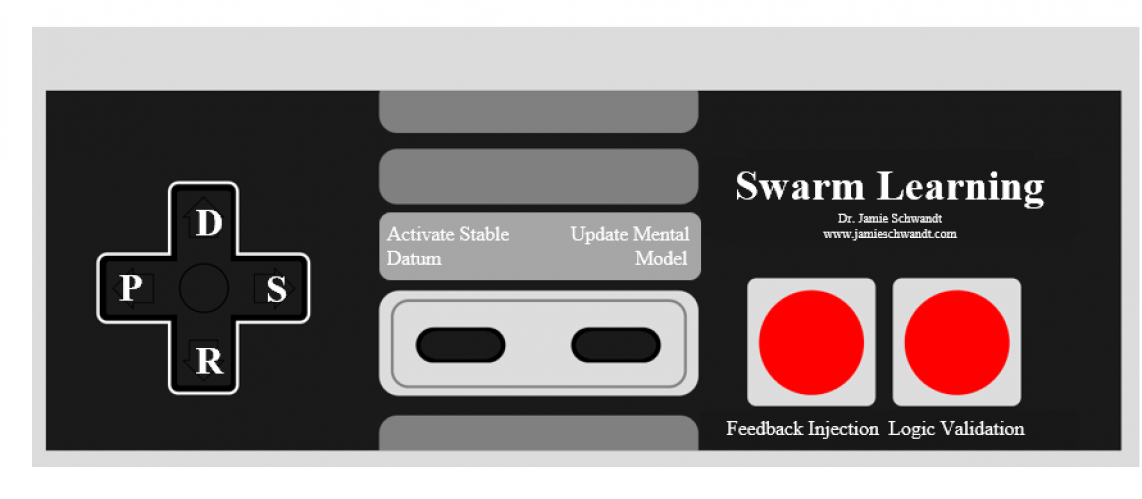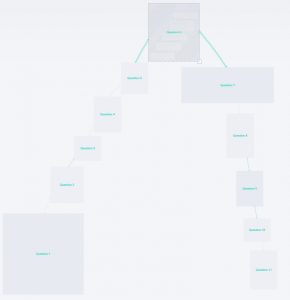- Discuss the typology of teams in health care. Provide an analysis of each element.
Function or Purpose – this element focuses on what the team will do and what authority the team has for decision making. There are sublevels/types of teams such as work, project, support, parallel, and management teams who all serve different purposes.
Decisional Authority – The element drills down on what authority a team has with their decision making. The team can be created to form recommendations to the true decision maker or the team itself may have final decision making power. It just needs to be clear to the team what decision making authority they actual have to keep down confusion.
Temporal Nature – The element focuses on the longevity of a team. Teams can be relatively permanent and ongoing, or time-limited and focused on a particular project or task.
Time and space – this element looks at where and when the team exist. Will the team be present in the same place, physically or will there be a need for virtual teams. Due to difference in times zones, when virtual teams can meet.
Diversity – this elements takes into account advantages of multiple perspectives and expertise have for decision making. They look to make sure a good mix of different ages, genders, cultural, consumer and professional diversity while also having members from different levels in the organization.
Accountabilities – This addresses if the team will be internal or external or both. A well-oiled team will have members that are accountable to each other for their individual contributions. Communication and coordination, for example, should be a team effort
Membership Fluidity and Boundary Permeability – this looks at the members of the team and are they fixed within the team or can the members vary. Both have liabilities. New members can disturb the current flow of members that are already bonded but fixed members may lead to a lack of new diverse idea.
- Using the model of team effectiveness, describe each element.
Performance – this looks at how well the team is doing what it was created to do.
Member Satisfaction – are the members happy in the team. Do they feel like they are contributing and are valued?
Quality of Work – was the work done and done well? Are the results from the team actually serving a viable purpose from its findings?
Capacity for Sustainability – is the workload demanded of the team able to be satisfied? Can the team keep up with the demands placed on the team?
- What is context? What is environmental context and describe it in health care?
Context is the circumstances that form the setting for an event, statement, or idea, and in terms of which it can be fully understood and assessed. Environmental context refers to things outside of itself that can effect it. For example healthcare may be effected by a law that has been passed by congress that is totally unrelated to healthcare.
- What is a context analysis? Using the context analysis model, provide an example in health care.
Context analysis is a method to analyze the environment in which a business operates. Context shapes the effectiveness of knowledge implementation and influences health improvement. The review will explore which contextual factors are important, and how, why, when and for whom they are important, within varied settings.
An example would be the surveys that goes out to patients after their visits with their physician. That way the organization to see what is important to the patients and use that to better the patient experience to keep them happy and coming back.
- What is the Nominal Group Technique? What is the Delphi Technique? Provide examples of both.
Nominal and Delphi technique – the requests ideas from the members and then those ideas or judged for its degree of sustainability. Delphi uses interaction between group members via questionnaires rather than face-to-face communication like Nominal
Example – Nominal: the opinion is presented and the group discusses the pros and cons conversational style. Delphi, the option is written down and a more formalized voting process is used to decide of the idea presented is usable.
- What are the stages of team development?
Forming – 1st stage – member become acquainted with each other and the purpose of the team.
Storming – 2nd stage – the team is faced with disagreement counter-independence, and the need to cope with conflict.
Norming – 3th stage – the team grows more cohesive and aligned with what the team was formed to do
Performing – 4th stage – after mutual understanding and acceptance of the groups purpose the team moves forward to the task of defining separate roles and establishing the work plan.
Adjourning – final stage – task accomplishment and increased emotionality.
- Answer the questions on p. 154 (Questions 1-3)
Question 1. – Team member turnover will slow the process and could hinder the purpose of the team because the result of turnover is lost knowledge for the member that left and learning curve and adaptation for the new member. The team leaders to create a formalized method that can be used on new members to get them acclimated to the group quicker to reduce adaptation time. (E.g. an ice-breaking/team building event for new members to get them to feel important, need, and a part of the group quicker. Alcohol can help achieve (and sometimes hinder) this! (ha)
Question 2. – Consumers should be involved because not only is that a different aspect that directly effects the purpose that the team was given. It’s a different aspect from outside the organization that formed the team. Sometimes team members within the organization can be too close to see the forest for the trees, so to speak. The team should welcome the consumer’s idea and treat them equally as the non-consumer ideas. Utilize the ideas of the consumer to gain knowledge from the outside world that directly effects the organization and the outcome.
Question 3. – I think the main obstacle in sustain improvements would be education and relaying of the information that was discovered by the team. As with most things, I think technology will leave to dissolution of improvement teams over time. With more technology, makes way for access to more and more information. A team of 10 people created to solve a problem may be minuscule to a team consisting of everyone in the world’s thoughts, ideas, recommendations, and opinions all put into a program that can use that and form the ALL TIME best solution EVER! As a team leader, make sure the team stays relevant, so that the team will be needed. As long as the team churns out results the organization will not disband.
- What is the gist and database? How can you apply it?
Bunch describes the concept of Fuzzy-trace theory (FTT). He says that FTT is the role of “verbatim” and “gist” and that they interact like that of an index for a database, where verbatim symbolizes large amounts of data, words, or numbers; whereas, gist is the one line, the essence, the key idea that summarizes the verbatim. Without knowing it, I apply Gist and database daily. For everything I think I know, I think I don’t know, for sure don’t know, or I definitely know and want to prove my point, I result to the google gods! If I would like a recipe for this amazingly tangy and mildly sweet secret special sauce that was used over the “New Orleans Shrimp” at a Cheddars restaurant, I can simple google “Cheddars” “Shrimp”, and “Sauce” as my gist and the database will bring me a slew full recipes of people who have recreated the sauce successful.
- What did you learn from watching The Strategic Leader in a VUCA World?
Directly entering the video, one thing that I learned or more so that was brought to my attention is that in business unless we are in the boardroom it’s hard to know what’s going on in the minds of the business leaders because of the nature of the business beast their thoughts are kept undercover and highly protected. So with that being said we look to the military for better learning because they are so organized and well documented for historic and information transfer purposes. I have never thought about why we look to the military over business leaders.
- What is the difference between a Soldier and Scout Mindset?
Soldier mindset, your actions stem from reflexes rooted in a need to protect yourself and your side and to defeat the enemy, whoever or whatever it may be. Scout mindset, your actions are based not on attacking or defending but on understanding the terrain and potential obstacles.
- What did you learn from watching and reading Why you think you’re right, even when you’re wrong?
The scout mindset and the traits associated does not have much to do with how smart you are or how much you know but instead, it’s about how you feel. Galef mentioned a particular quote from Antoine de Saint-Exupéry, author of The Little Prince. “If you want to build a ship, don’t drum up your men to collect wood and give orders and distribute the work,” he said. “Instead, teach them to yearn for the vast and endless sea.” My take away from that is the best way to get the results you want is to make your dream everyone’s dream. You will get more from a worker who is passionate about the outcome rather than a worker who is just, merely, working to complete a job.


Fancy map! I don’t think I have seen one like that yet in this class. I like the approach you took. your gist and database Cheddar’s example caught my eye. I had trouble thinking about if I actually apply that methodology to any of my daily activities. You got creative with your example. I love Cheddars!
Anthony – great job! I agree with Lara, I thoroughly enjoyed the Cheddar’s example:
“For everything I think I know, I think I don’t know, for sure don’t know, or I definitely know and want to prove my point, I result to the google gods! If I would like a recipe for this amazingly tangy and mildly sweet secret special sauce that was used over the “New Orleans Shrimp” at a Cheddars restaurant, I can simple google “Cheddars” “Shrimp”, and “Sauce” as my gist and the database will bring me a slew full recipes of people who have recreated the sauce successful.”